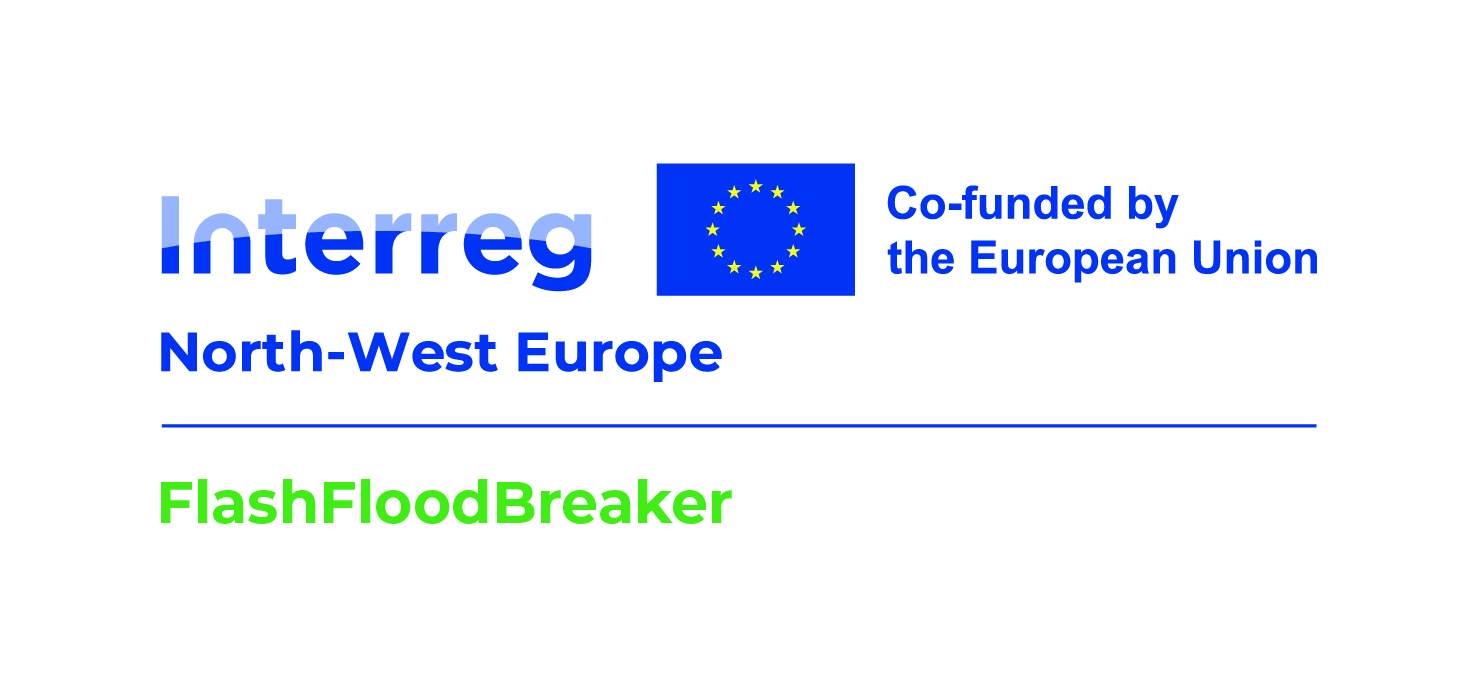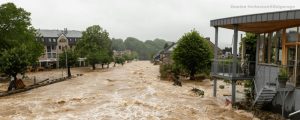NWE faces an increasing number of flash flood disasters due to climate change. Such extreme events, such as in July 2021 in DE, BE, NL, LU, FR, IE and CH, are linked with fatalities, huge losses and damages. A flash flood is a rapid rise of water in low-lying areas that occurs within only 3-6 hours of a heavy rainfall. Risk-affected areas in NWE are urban, polder and steep valley areas. Because existing land-use constraints restrict the use of conventional flood protection measures, new approaches to manage pluvial and fluvial flash floods-related risks are needed.
The objective is to make NWE more resilient to extreme flash flood events. By project end, organisations responsible for flood management and residents in 7 risk-affected areas (DE/Emscher Lippe area, NL/Limburg & North-Holland, BE/Wallonia & Flanders, Ireland, FR/Moselle), who are currently not fully aware or prepared, will be empowered to assess their vulnerability, to strengthen their resilience and to collectively and individually reduce the hazards and better act in case of extreme flash floods.
They will benefit from the main outputs:
– 1 joint strategy for NWE and 3 actions plans for an effective management of flash flood-related risks;
– 6 jointly piloted solutions; to model flash floods and predict them in real-time; to protect people, infrastructures and economic activities; to warn, prepare and rescue populations;
– 500 participants (members of crisis units, residents, students) in joint training schemes to anticipate and behave properly by emergency.
Partners take the approach that extreme flash floods in NWE areas are inevitable, thus all concerned parties in affected territories need to prepare for it. A transnational approach is required to transfer knowledge from affected to so far spared NWE-regions, to validate models with distinct territorial patterns, and to plan transnational emergency responses.
FlashFloodBreaker receives ERDF funding within the Interreg North-West Europe programme.



